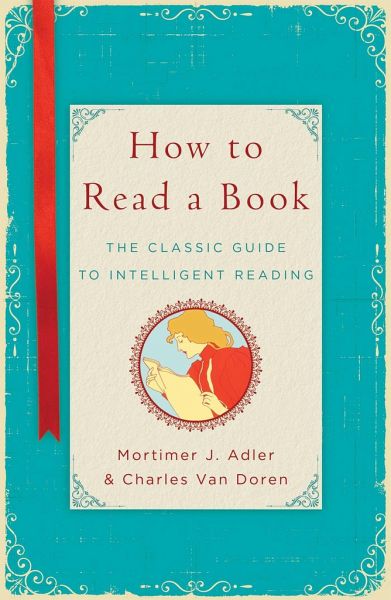
How to Read a Book
The Classic Guide to Intelligent Reading
Versandkostenfrei!
Versandfertig in 2-4 Wochen
45,99 €
inkl. MwSt.
Weitere Ausgaben:

PAYBACK Punkte
23 °P sammeln!
Investigates the art of reading by examining each aspect of reading, problems encountered, and tells how to combat them.



